Notifications
Optimization of a Ganglion Cell-Based Optogenetic Therapy for Vision Restoration – Study by the EKFZ
Degenerative retinal diseases such as Retinitis pigmentosa (RP) and geographic atrophy (GA) affect approximately 10 million people worldwide and lead to significant and often irreversible vision loss.
Note: The prospective observational study began in March 2025 and is designed for five years (Clinical-Trials.gov ID: NCT07056738). Interested study participants can still register.
Teamwork in the Inner Ear – our Hearing Relies on Organized Grouping of Proteins
Researchers at the Göttingen Campus have for the first time succeeded in examining the tiny synapses in the inner ear – the contact points between the sensory hair cells and the auditory nerve cells – at the molecular level. They were able to show that ion channels and other synaptic proteins, which are essential for hearing, are organized in specific patterns. This arrangement ensures optimized transmission of auditory information to the brain. These findings could contribute to the development of therapies for hearing disorders with a synaptic cause. The results have been published in the journal “Science Advances.”
Science Days 2025
The Science Days of this year took place from October 23 to 25, 2025 at Europa-Park in Rust. The Confertainment Center in Europa-Park presented itself as a world of experiences. The Science Days took visitors on a journey through the world of mathematics, computer science, natural sciences and technology.
Regulatory Frameworks for Animal Research – Best Practices and Challenges
This is one of the key guidelines that have to be considered when conducting animal experiments. In the EKFZ Academy course “Regulatory frameworks for animal research – best practices and challenges”, workshop participants were guided through the legal regulations and ethical justifications for animal experiments.
Early Childhood Deafness – Researchers at Göttingen Campus Unravel Structure and Function of a Key Auditory Protein
Göttingen researchers have elucidated the structure and function of otoferlin – a protein that plays a crucial role in the hearing process. The absence or impaired function of otoferlin causes a common form of early childhood deafness. The results published in the journal “Science Advances” mark a milestone after over two decades of research on otoferlin at Göttingen Campus and contribute to optimizing initial gene therapies for the treatment of deafness.
KLANGLICHT: Sound of Light
– Nominated for the San Francisco Dance Film Festival
The San Francisco Dance Film Festival returns from October 24 to November 9, offering an extensive program centered around dance on screen. This year’s festival features 18 curated programs that highlight the power of movement in all its forms, from deeply personal documentaries and narrative shorts to boundary-pushing dance films, live performance recordings, and vibrant music videos.
Optogenetics Meeting 2025
– Successfully Completed with over 100 Participants
From October 9 to 11, 2025, the second Optogenetics Meeting took place in Uslar/Volpriehausen at the country hotel “Am Rothenberg”. During these inspiring days, experts in the field of optogenetics gathered to present and discuss new data. Furthermore, there were exciting insights into the research work.
Objects Strengthen our Inner Compass

A German-Canadian study led by the University Medical Center Göttingen (UMG) shows that viewing objects helps improve the brain’s navigation system. The study results are published in the scientific journal “Science”.
Photo: Prof. Dr. Emilie Macé, Head of the ‘brain-wide networks’ research group at the Department of Ophthalmology, University Medical Center Göttingen (right), together with Johanna Luise Mayer, co-author of the study, in front of the experimental setup in the lab. Photo: Dorothea Laurence
Institute for Auditory Neuroscience and InnerEarLab Symposium on August 20, 2025

The Institute for Auditory Neuroscience and InnerEar Lab hosted its annual symposium on August 20, 2025, at the Max Planck Institute NAT, City Campus.
In addition to interesting scientific presentations by their own members and the presentation of the recently launched Collaborative Research Centre 1690 “Disease Mechanisms and Functional Restoration of Sensory and Motor Systems”, participants were able to hear the MBExC plenary lecture by Prof. Karen Steel, “Which types of hearing loss can be reversed?” (far left in the photo).
“Groundbreaking” German Researchers Develop Protein to Cure Blind and Heart Patients
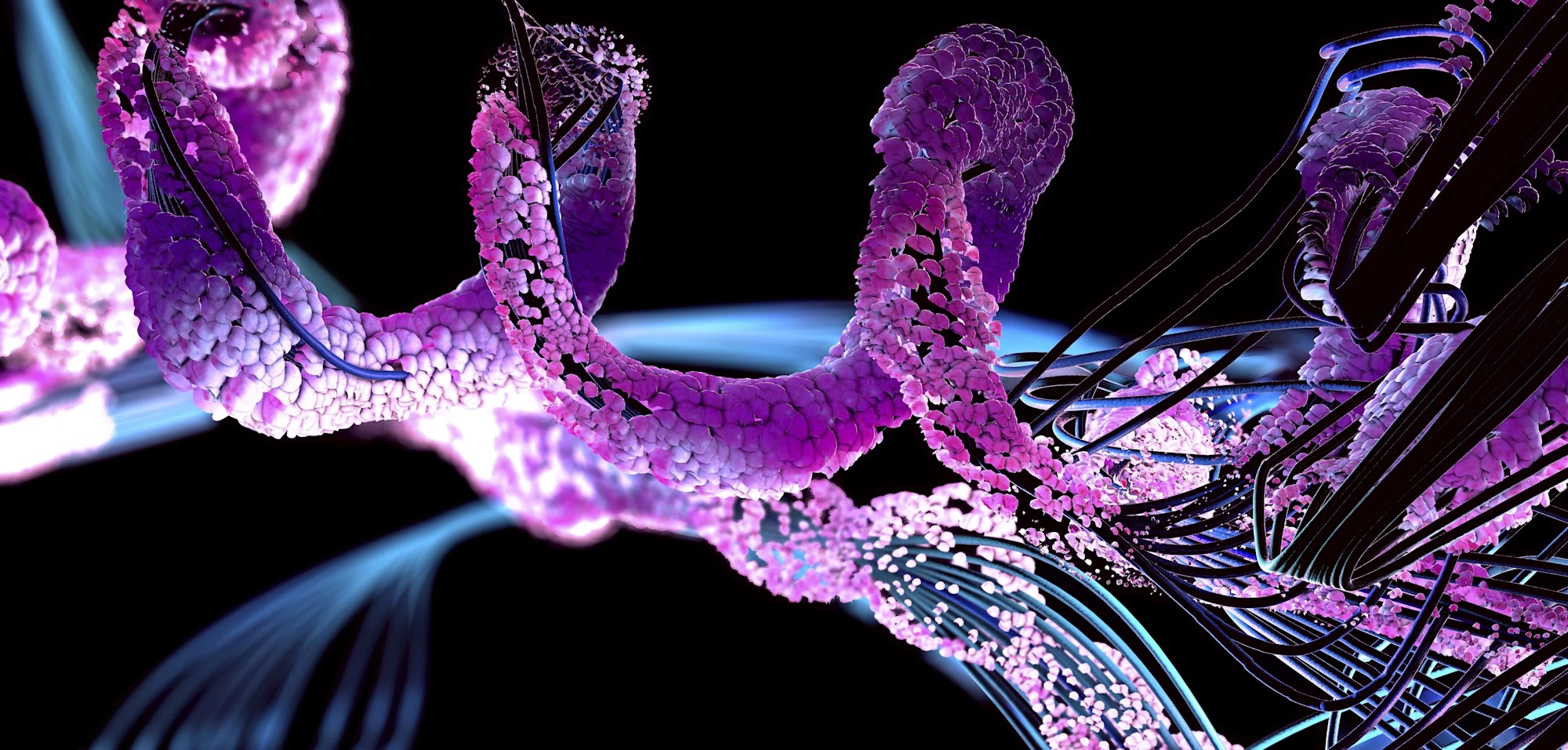
Scientists worldwide hope for new therapeutic possibilities from optogenetics. Researchers in Göttingen are currently developing a protein that offers new hope to blind, deaf, and heart patients. In the future, it could be used, for example, to regulate heartbeats.
New DFG Research Group Coordinated from Mannheim
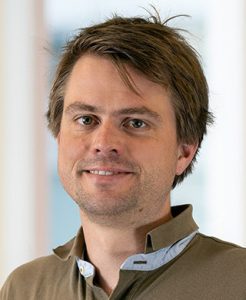
German Research Foundation Funds Biomedical Research Project at Mannheim Medical Faculty
The University of Heidelberg was successful in the latest funding round of the German Research Foundation (DFG) with a grant application for a new research group in basic biomedical research. In the new research network, scientists from the Medical Faculty Mannheim and eight other university locations in Germany will investigate the fundamental principles that enable organisms to adapt their organ function and behavior to constant environmental changes.
Improved “Molecular Light Switch” Promises Help for Blind, Deaf, and Heart Disease Patients
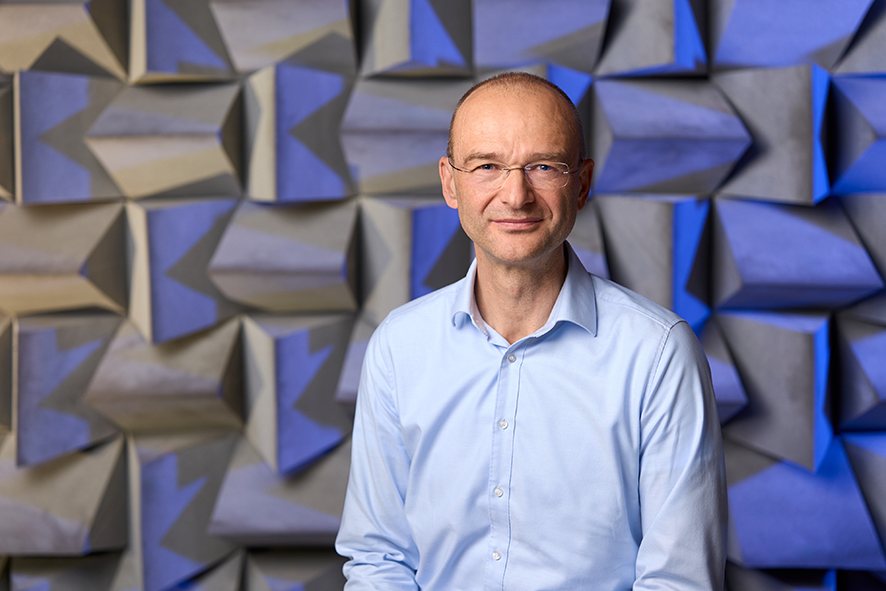
Reliable and gentler control of cell activity with light: Göttingen researchers from the Multiscale Bioimaging (MBExC) Cluster of Excellence and the Else Kröner Fresenius Center for Optogenetic Therapies (EKFZ OT) at the University Medical Center Göttingen (UMG) are developing a light-sensitive protein that can restore sight and hearing and regulate heart rhythm. What’s special: Very small amounts of light are sufficient to operate this “molecular light switch”. This opens up new possibilities for the development of innovative therapies for the treatment of blindness, deafness, and cardiac arrhythmias. The results were published in the renowned journal “Nature Biomedical Engineering”.
“KlangLicht” how a Music Video Clearly Demonstrates the Achievements of Cochlear Implants and Hearing with Light for Everyone.

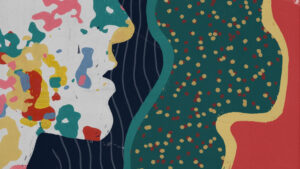
The audiovisual music project “KlangLicht – sound of light” recreates the impressions of a person who, after years of severe hearing loss or deafness, hears again for the first time following the initial fitting of a cochlear implant.
A report by Audioinfos365
Unlocking Innovation: the Strategic Power of Patents
“In the biotechnology sector, the time to first venture capital financing is shortened by 76% if the company has at least one patent application.” (Study “To Be Financed or Not – The Role of Patents for Venture Capital Financing”)
Science Minister Falko Mohrs visits the University Medical Center Göttingen – Presentation by Dr. med. Lennart Roos
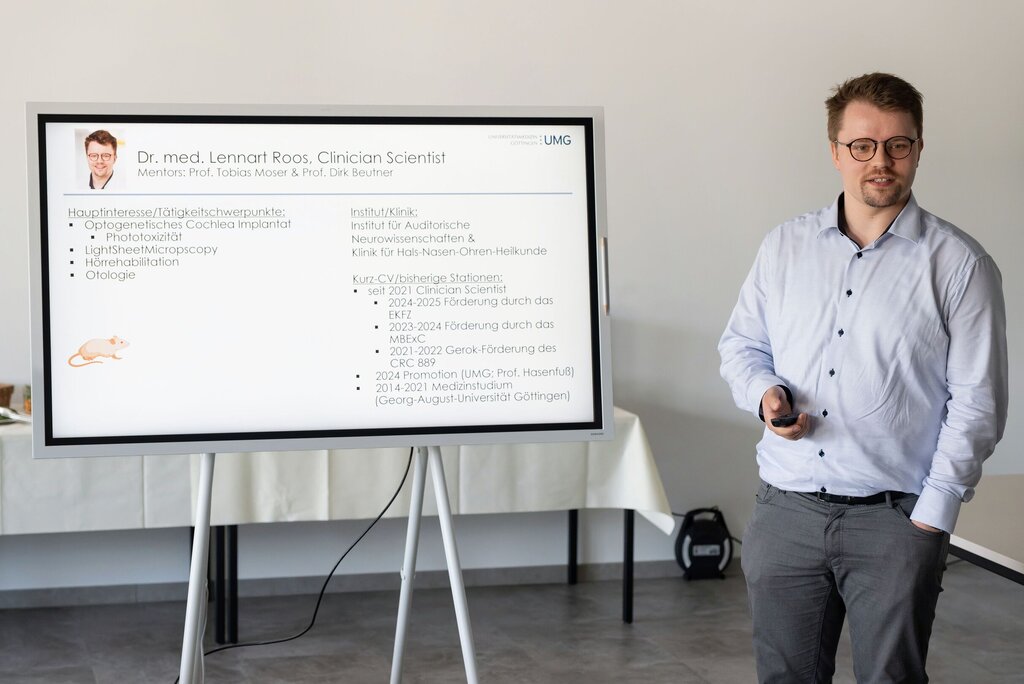
Lower Saxony’s Minister for Science and Culture, Falko Mohrs, visited the University Medical Center Göttingen (UMG) on July 15, 2025, as part of his summer tour.
The program also included a presentation by the Clinician Scientist working at the Else Kröner-Fresenius Center (EKFZ) for Optogenetic Therapies, Dr. med. Lennart Roos.
At the EKFZ, Clinician Scientists combine their medical practice with translational research to translate medical innovations into clinical practice. They develop their own research projects, which are assigned to one of the four teams or five platforms of the EKFZ.
Science Minister Falko Mohrs visits the University Medical Center Göttingen
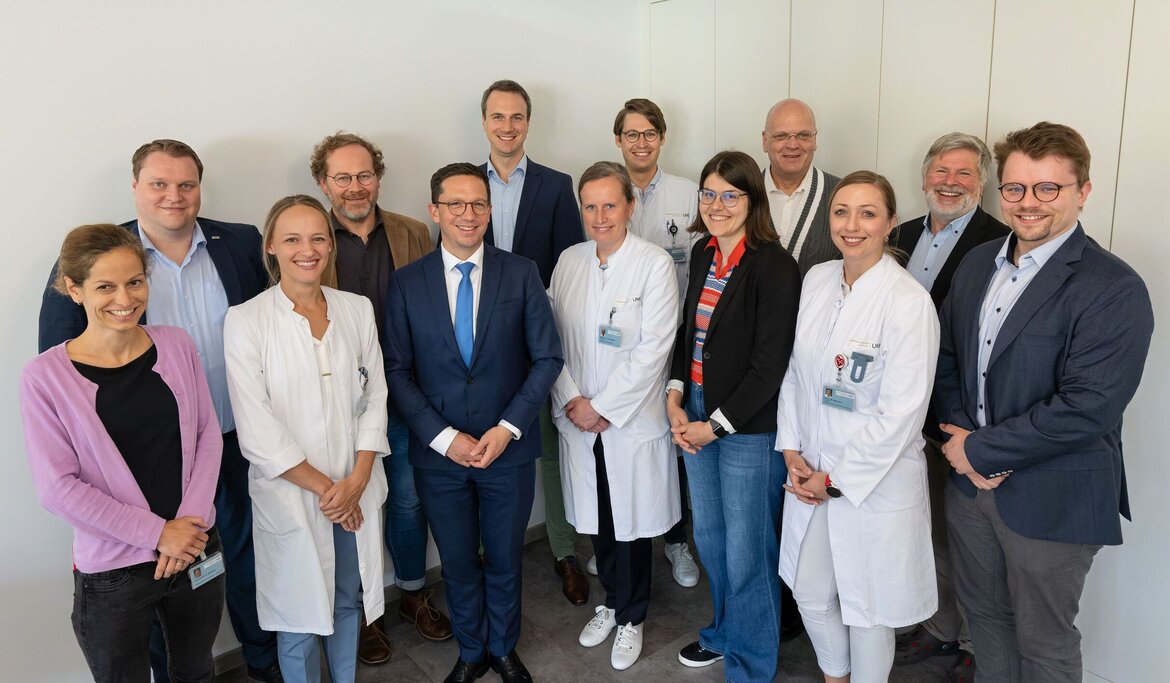
Lower Saxony’s Minister for Science and Culture, Falko Mohrs, visited the University Medical Center Göttingen (UMG) on July 15, 2025, as part of his summer tour. The program included presentations of selected research areas and teaching facilities at UMG, an update on the construction progress of the new UMG NIKO building, and an exchange with junior researchers and newly appointed institute and clinic directors.
Boris Seewald Turns Hearing Science into Mesmerising Visual Art
With Klanglicht, Berlin-based video artist Boris Seewald transforms cutting-edge hearing science into a swirling spectacle of color, choreography, and emotion. The project explores a radical new concept: “hearing with light,” using optogenetic cochlear implants to imagine restored hearing in a richer, more natural form. We caught up with Boris Seewald to discuss the collaboration, personal resonance, and how 2,500 hand-drawn frames brought the sound of the future to life.
Calcium Channel in the Ear: how a Tiny Flaw Affects Hearing
Researchers at the University Medical Center Göttingen (UMG) and the Göttingen Cluster of Excellence “Multiscale Bioimaging” (MBExC) show how the minimal change of a single ion channel increases the sensitivity of sensory cells in the inner ear. Even quiet sounds like a whisper are perceived better, but cause a persistent overload that can promote long-term hearing loss. These findings deepen the understanding of how sound information is processed in the ear. The results have been published in the journal “Science Advances”.
Hearing with Light: Boris Seewald Merges Dance & Sound in “Klanglicht” Short Film
Inspired by the films of early animation pioneer Oskar Fischinger, director Boris Seewald assembles 2,500 hand-drawn frames into a poetic expression of auditory perception for the University Medical Centre of Göttingen, Germany.
Boris Seewald: “Klanglicht was developed in collaboration with composer Ralf Hildenbeutel and audiologist Jenny Blum.
Researchers Discover Parallels in Cell Communication between Embryo and Ear
(pug) Like all complex organisms, every human being originates from a single cell that multiplies through countless cell divisions. Thousands of cells coordinate, move, and exert mechanical forces on each other as an embryo takes shape. Researchers from the Göttingen Campus Institute for Dynamics of Biological Networks (CIDBN), the Max Planck Institute for Dynamics and Self-Organization, and the University of Marburg have now discovered a new form of coordination in embryonic cell behavior. This involves molecular mechanisms previously known from hearing. The researchers attribute the fact that cells use the same proteins in two such different functions to their evolutionary origin. The results have been published in the journal Current Biology.
6th Night of Science in Göttingen on June 21, 2025
During the Göttingen Night of Knowledge, scientific institutions open their doors to the public, providing insights into their work. It offers the opportunity to engage in conversations with researchers and participate in various activities and experiments.
Liver-pancreas Organ Model, Heart Muscle Cells from Urine, and Memory Training in Virtual Reality
Great interest in medical topics at the 6th Night of Knowledge: Employees of the University Medical Center Göttingen (UMG) presented more than 80 offerings to over 8,000 visitors in the main building and in five external areas of the UMG – a new record! Special highlights included the walk-in organ model consisting of the liver and pancreas, as well as the production of heart muscle cells from urine.
Insights into the Translation and Startup Ecosystem in Lower Saxony
A broad regional network of players from science and industry is crucial for the successful translation of innovative research into clinical use. The life science ecosystem in Lower Saxony is constantly growing, and four key players were showcased at the EKFZ Academy workshop.
Music Video about Hearing Prostheses “I Am Deaf and Can Still Hear.”
Music Video about Hearing Prostheses “I Am Deaf and Can Still Hear.” By JOACHIM MÜLLER-JUNG
The sound of a medical revolution: With the music video “Klanglicht”, artists and hearing specialists have made it tangible what it’s like when a technological revolution miraculously changes lives.
Behind the Scenes
KLANGLICHT – Sound of Light
What does it sound like when someone hears music for the first time after years of silence? How does it feel when new technologies make the world of sound clearer and more differentiated than ever before? These questions are addressed in the audiovisual art video titled KLANGLICHT – sound of light. This hand-animated video, with approximately 2,500 individual images, is based on an artistic idea by Jenny Blum, an audiologist at the Department of Otorhinolaryngology at the University Medical Center Göttingen.
Enigmatic Ring Bearers: Göttingen Researchers Unveil Structural Secret of Ferlins
Researchers from the Göttingen Excellence Cluster Multiscale Bioimaging (MBExC) have revealed the 3D structure of the membrane proteins myoferlin and dysferlin using high-resolution cryo-electron microscopy. The insights gained enable new approaches for the development of targeted drugs to treat diseases such as muscle atrophy, hearing disorders, and certain types of cancer. The results have been published in the journal “The EMBO Journal”.
Audiovisual Art Project Lets You Experience “Hearing with Light”
Göttingen researchers, under the leadership of the University Medical Center Göttingen (UMG), have collaborated with audiologists and artists from film and music to translate the sound experience of an optogenetic cochlear implant into image and sound. The music video artistically conveys the restoration of “hearing with light”, a technology that promises an improved hearing experience compared to classical cochlear implants.
Second Alumni Day

We are very pleased to welcome all project managers funded by EKFS to our second Alumni Day.
“Optogenetic therapies: opportunities and challenges“
Prof. Dr. Tobias Moser, Institute for Auditory Neuroscience &
InnerEarLab, University Medical Center Göttingen
Annual Report 2024
An overview of the activities of the Else Kröner-Fresenius Foundation in the year in review.
Illumination in the Cochlea
A new dimension of hearing for those who are deaf or extremely hard of hearing.
Successful Kick-Off of the EKFZ Academy
On May 7th, 2025, we kicked off the EKFZ Academy with an inspiring workshop on the ethical and legal challenges of optogenetic research, in cooperation with the NeurOPTICS research project team from Martin Luther University Halle-Wittenberg. The NeurOPTICS research project, led by Dr. Hans Zillmann, addresses ethical, social, and legal questions in neuronal optogenetics and develops recommendations for scientific and social discourse.
2024
Restore Sensory and Motor Impairments
New Göttingen Collaborative Research Center investigates causes for better therapies
Else Kröner Fresenius Center for Optogenetic Therapies Approved
Else Kröner-Fresenius Foundation (EKFS) funds new research center for optogenetic therapies with 37.4 million euros over ten years at the University Medical Center Göttingen (UMG).
